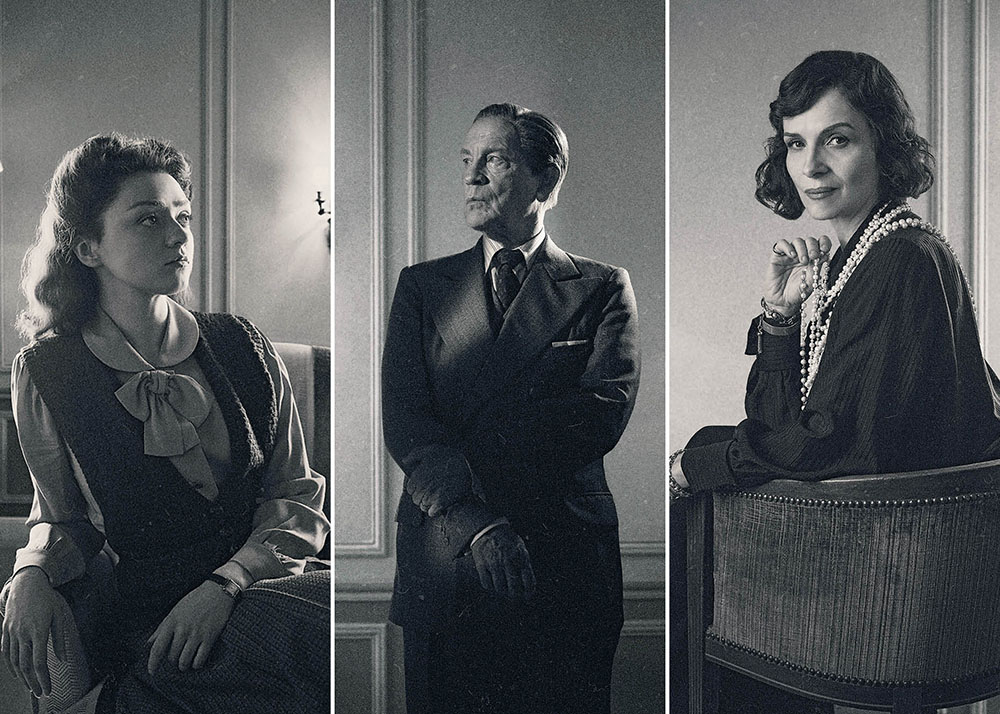A sumptuous historical drama from the creator of Damages explores the rise and fall of various fashion icons amidst the carnage and impossible choices of the Second World War
The story of how designer Christian Dior and his contemporaries launched modern fashion in Paris is a fascinating tale in itself. But set against the horrors of the Second World War, The New Look is an eye-opening deep dive into what one does to survive, both personally and professionally.

As the show opens at the Sorbonne in 1955, Dior (Ben Mendelsohn) is asked about creating couture for the Nazis when his colleague Coco Chanel (Juliette Binoche) closed her Paris shop during the war. As the history books have shown, nothing about actions taken during those times is quite that reductive, and neither is Todd A. Kessler’s take on this wartime narrative. “We’re trying to embody the characters and bring the very challenging choices that they had to make in a very challenging time to light,” the erstwhile Damages and Bloodline creator explains. “Ideally, the experience would be, if you watch it, that you might put yourself in the shoes of the characters and ask yourself, ‘What would I have done if I was faced with those choices?’”
As the Second World War re-enters the zeitgeist, with series like Masters of the Air and All the Light We Cannot See, The New Look aims to explore the global conflict from the perspective of people the viewer is familiar with, but rarely for their achievements during this era. “In many ways, it’s the artist’s story of survival during the Nazi occupation,” says Kessler. “In addition to them being artists, one is very successful at the start of the war and world-renowned and wealthy, and the other is an unknown. The status that each one had at the start of the war and then the status that each one had coming out of the war really separated it [from other Second World War narratives].”

In a world of divided morals, Coco Chanel is at the forefront. It has long been known that the French icon collaborated with both the Nazis and the French resistance, but rather than approach the designer through bullet points, Binoche dug into Chanel’s motivations from childhood onward. “I read 12 books in order to really understand her because she hid herself so much during her whole life,” says Binoche. “I felt I was reading a Dickens novel. It was so devastating. First of all, she was so poor. Her mother died when she was 11, in front of her. Her father abandoned them. Her abandonment issues were big.”
Understanding Chanel’s need for family, which during WWII was her nephew whom she saves from the Nazis through questionable means, was how Binoche could relate to the designer. “I could put my hand in the glove of Chanel. It took me into her life and her way of behaving,” the actress reflects. “I cared for her, because you understand her need of family. And when you understand the need, where it comes from, she becomes a human being and not an awful human being.”

While Dior kept his head down during much of the war, working alongside Balmain and Balenciaga under French couturier Lucien Lelong (John Malkovich), his sister Catherine, played by Game of Thrones alum Maisie Williams, is an active part of the French resistance. “Her story was really incredible,” says Williams. “I knew about the muses of Dior, and learning more about Catherine and realizing that this fashion house kind of was born from her being the original muse was so interesting to me. But in terms of playing a hero, I think she had an incredible life. And in this story, she does become a person of hope in Dior’s life and someone who is inherently good.” But, as is often the case, the consequences to being heroic can be hard to deal with. “I think that all of these characters, had they been given a choice to live through what they lived through or not live through those experiences, they would definitely select not living through those experiences,” says Kessler. “The idea that heroism is then bestowed on Catherine in real life, she was very uncomfortable with. It’s an interesting experience — to really try to portray characters whose sole goal is to survive.”

As the war finally ends, and the focus shifts to bringing back hope through fashion and beauty to a continent ravaged by death, The New Look gazes ahead to a long road of storytelling opportunities. “What you’re seeing is just the tip of the iceberg,” says Kessler. “The hope in future seasons of the show is that we get to explore more of Chanel’s past and her returns to Paris after her self-exile. We continue telling the story of Christian Dior, who ends up bringing on Yves Saint Laurent as a protégé. When Dior passes away, Yves Saint Laurent, at the age of 21, takes over the largest, most profitable fashion house in the world. What you then experience is fashion houses being taken over by designers whose names are not on the fashion house, and that brings us to current day. We can go forever.”
The New Look, streaming on Wednesdays, on Apple TV+
